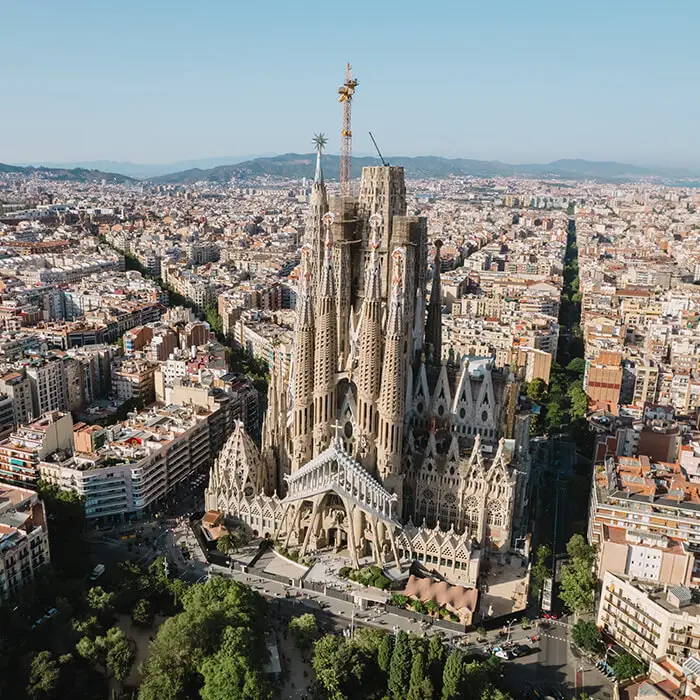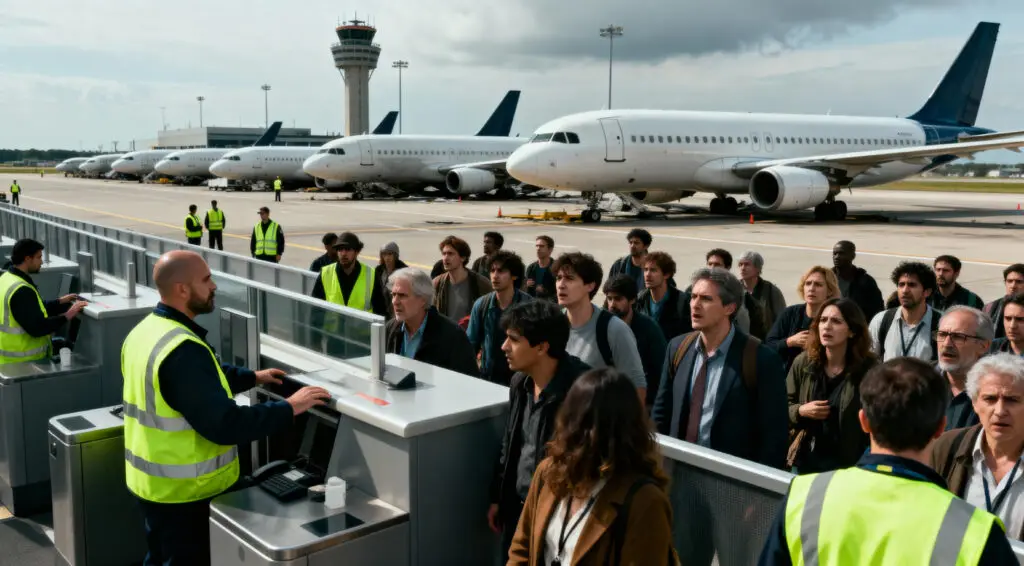Sagrada Família Officially Becomes the Tallest Church in the World
After builders placed the first section of a massive cross atop the central Tower of Jesus Christ at the Sagrada Família in Barcelona, it officially became the tallest church in the world. The basilica now stands 162.91 meters high, surpassing Ulm Minster in Germany, which had held the record since 1890.
This milestone marks another historic step in the ongoing construction of one of the world’s most iconic architectural masterpieces, designed by Catalan modernist Antoni Gaudí, whose vision continues to define Barcelona’s skyline.

A Century-Long Dream Nears Completion
Construction of the Sagrada Família began in 1882, with Gaudí assuming leadership the following year. He transformed the original concept into a grand synthesis of Gothic and Art Nouveau design, blending natural forms and intricate symbolism throughout the structure.
At the time of Gaudí’s death in 1926, only one of the planned 18 towers had been completed. Nearly a century later, his vision is finally close to realization. The Sagrada Família Foundation has announced that the final phase of construction is expected to be completed in 2026, marking the 100th anniversary of Gaudí’s death.
Tower of Jesus Christ to Reach 172 Meters
The Tower of Jesus Christ will continue to rise over the next few months as the remaining parts of the cross are installed. Once complete, the basilica will reach a total height of 172 meters, representing the peak of Gaudí’s spiritual and artistic ambition.
This addition not only solidifies the Sagrada Família’s world record but also serves as a living monument to the harmony between faith, art, and innovation that defines modern Barcelona.
Recommended Article: Bill Gates Advocates Humanitarian Approach to Climate Action
Challenges Across 142 Years of Construction
The project has faced many obstacles over its 142-year history, including the Spanish Civil War, during which anarchists burned parts of the crypt and destroyed many of Gaudí’s original models. Financial challenges also slowed progress, with early funding reliant on donations before transitioning to tourism and private investment.
The Covid-19 pandemic further disrupted progress by reducing visitor income. Despite these setbacks, devotion to Gaudí’s legacy remains unwavering. Xavier Martínez, general director of the Sagrada Família Foundation, described the basilica as a “spiritual and cultural legacy” that extends far beyond architecture.
Honoring Gaudí’s Legacy
Gaudí, a deeply religious man, died in 1926 after being struck by a tram and is buried in the church’s crypt. His influence continues to guide the project, as modern architects interpret his surviving sketches and models using advanced design technologies.
In 2026, the Sagrada Família Foundation plans to hold a series of events to commemorate the centenary of Gaudí’s death and celebrate the completion of the Tower of Jesus Christ.
A Modern Symbol of Faith and Innovation
The Sagrada Família has become a global symbol of perseverance and creativity. Attracting more than 4.5 million visitors each year, it is one of Europe’s most visited landmarks.
Its soaring spires and intricate facades represent a dialogue between past and future, blending centuries-old craftsmanship with digital modeling and engineering innovations. The basilica remains a living example of how faith can inspire human achievement across generations.
Sagrada Família Nears Completion After More Than a Century of Work
Although the main structure is expected to be completed next year, additional work on the basilica’s detailed sculptures, facades, and monumental stairways will continue for another decade. When fully finished, the Sagrada Família will not only be the tallest cathedral on Earth but also one of the most extraordinary architectural creations in history.
Since its first stone was laid in the 19th century, Gaudí’s masterpiece has inspired millions. It stands today as a timeless testament to the enduring power of faith, imagination, and human perseverance.























